Your cat spends what seems like hours each day meticulously licking, cleaning, and preening themselves, and this isn’t just vanity at work. These detailed grooming sessions tell you remarkable stories about your feline friend’s health, emotions, and natural instincts. Understanding what drives these behaviors can help you recognize when everything’s normal and when something might need your attention.
From the gentle paw-washing ritual after meals to those marathon grooming sessions that seem to go on forever, each licking pattern carries meaning. Think of it as your cat’s personal diary written in tongue strokes and paw movements. Let’s explore what your cat is really telling you through their daily grooming routine.
The Post-Meal Face Washing Ritual
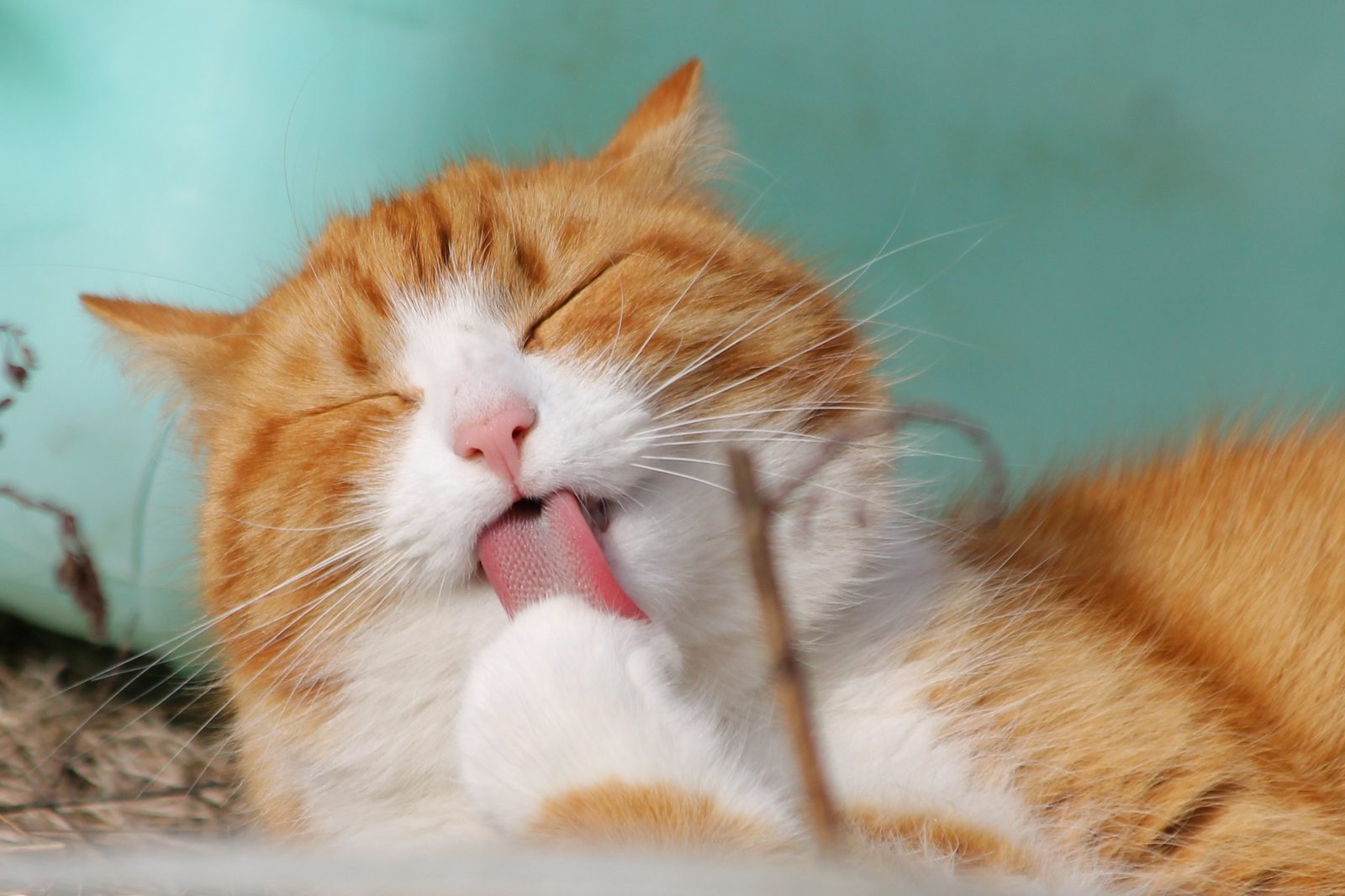
You’ve probably noticed your cat immediately begins washing their face and paws after every meal. This behavior stems from their wild ancestry, where removing the scent of prey blood was crucial for survival, preventing larger predators from detecting them. This instinctive cleanliness goes far beyond simple tidiness.
The methodical way your cat licks their paw and then wipes it across their face follows an ancient pattern. They first lick their forepaw several times, then use its medial side to wipe across the neck, back of the head and ears, and finally the face. This systematic approach ensures no trace of food remains on their most vulnerable areas.
The Temperature Control System

Cats can only sweat through their paw pads, so they rely on the evaporation of saliva after grooming to help cool themselves on hot days. When you see your cat grooming more frequently during warmer weather, they’re essentially creating their own air conditioning system through strategic saliva placement.
Well-groomed hair fluffs up and allows better air circulation against the skin. This means your cat’s meticulous licking sessions serve as both cooling and insulation maintenance, adapting their coat for whatever weather conditions they face.
Social Bonding Through Mutual Grooming
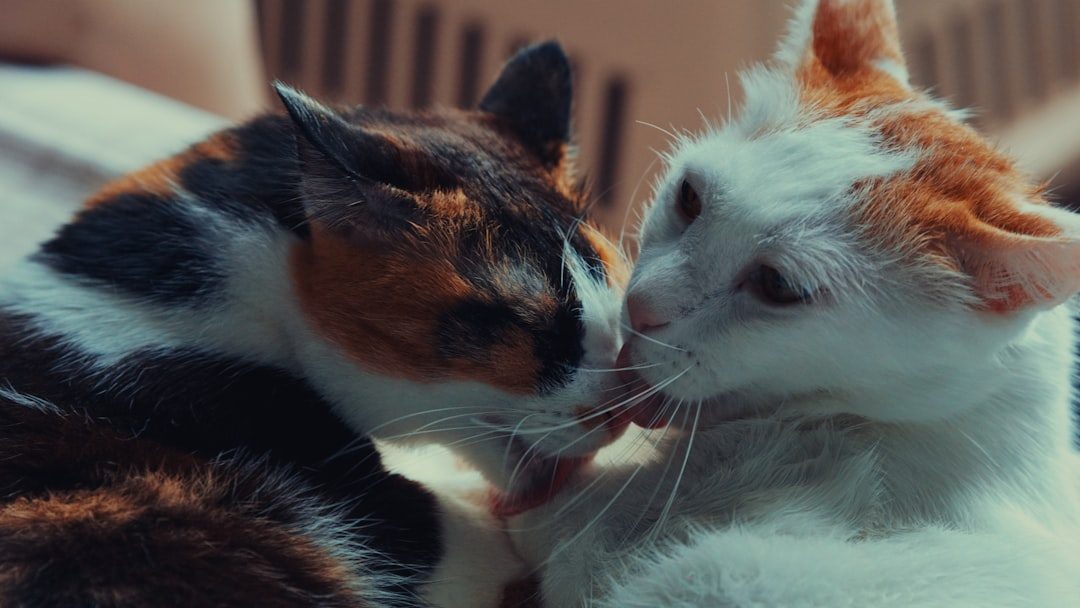
When cats groom each other, known as allogrooming, they’re participating in one of their most intimate social behaviors. This social grooming not only creates bonding but also establishes a group scent, which is especially beneficial in establishing and recognizing a pack. Your cats are literally sharing their identities through licking.
Mutual grooming involves one cat licking another, often on hard-to-reach areas like the head, neck, and face, and it’s a social bonding ritual seen frequently between littermates, bonded pairs, or cats who have established trust. If your cats engage in this behavior regularly, it’s a beautiful sign of their strong relationship.
The Displacement Behavior Response
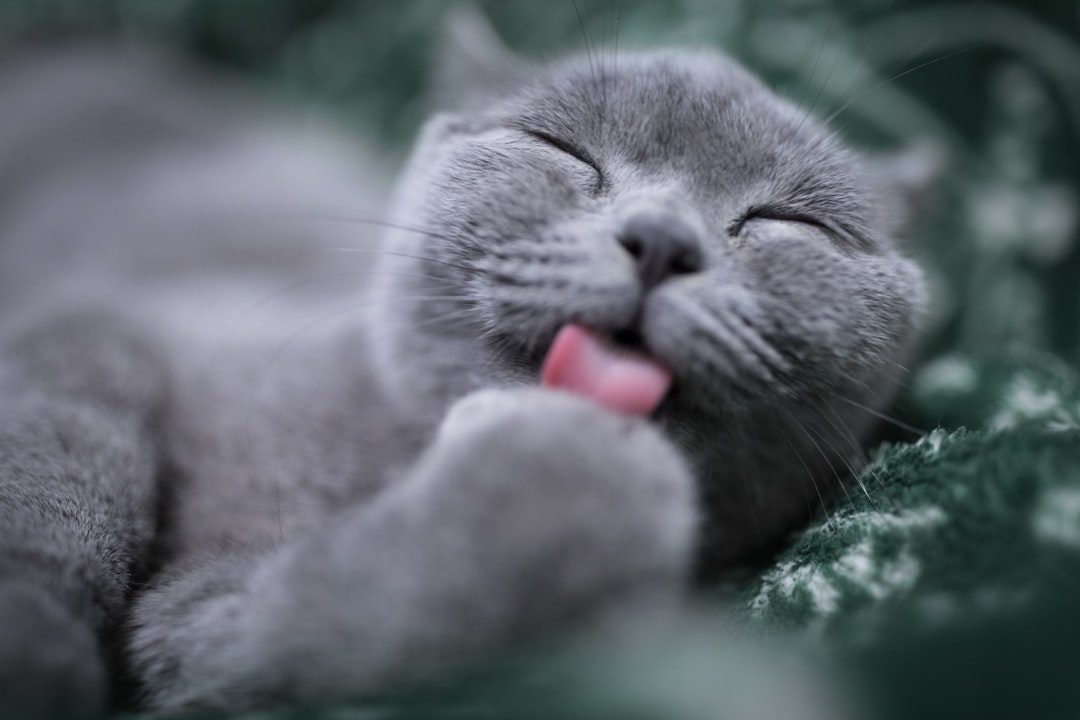
Sometimes grooming isn’t about cleanliness at all – it’s your cat’s way of dealing with stress or embarrassment. Cats may groom themselves when faced with stressful situations such as the presence of an aggressive animal or after a fall, and this displacement behavior helps them deal with conflict by providing a direct calming effect on the brain.
Think of it like a person fidgeting with their hair when nervous. When cats fall off a shelf, miss an ill-timed jump, or get their affectionate advances rejected, they do a quick scan of the room to gauge whether anyone witnessed their shame and will immediately proceed to nonchalantly groom themselves. It’s their way of saving face and regaining composure.
The Health Status Indicator
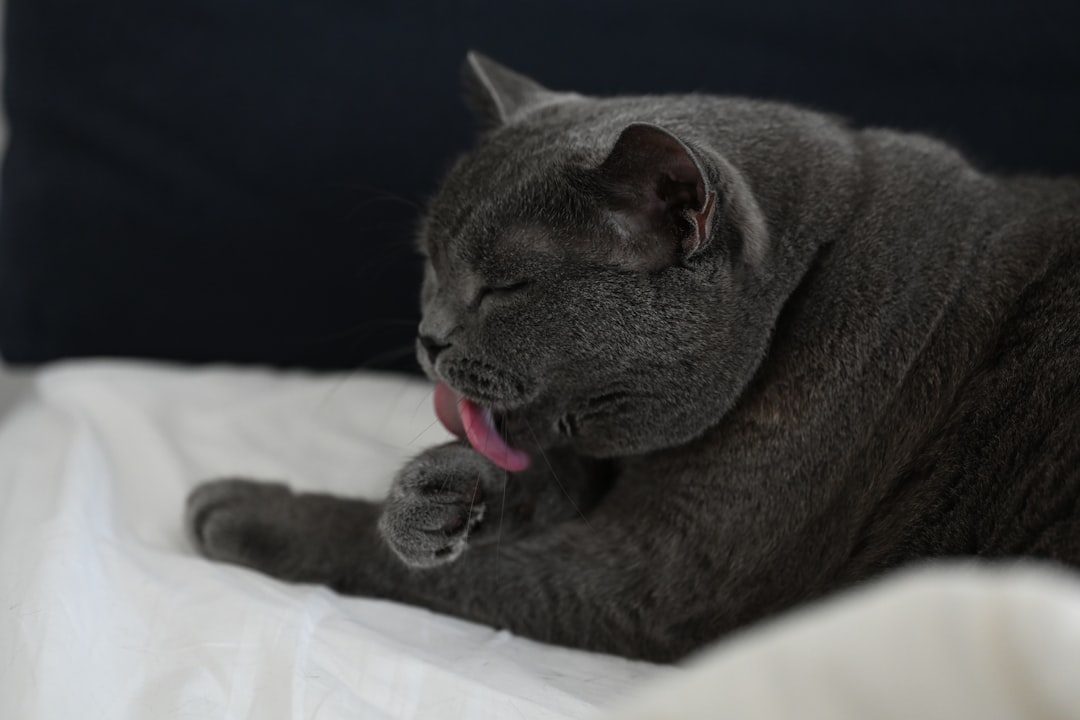
Grooming behavior is an important indicator of health in feline friends, with cats spending 30 to 50 percent of their day in grooming activities. When your cat’s grooming habits suddenly change, it often signals health issues before other symptoms become apparent.
If a cat becomes ill, they may stop cleaning themselves, which could be a sign of arthritis, pain, or dental problems. Conversely, if your cat is suffering from back pain, they may be more likely to groom that particular area, while not grooming in one particular place could also indicate arthritis.
The Scent Distribution System

Licking stimulates the production of sebum, an oily secretion produced by glands at the base of each hair, which helps lubricate and waterproof the fur while making it shine. Your cat isn’t just cleaning – they’re maintaining their natural protective coating and ensuring optimal fur condition.
Cats can even use their front paws to stimulate tiny oil glands on their head, and this oil serves as a cat’s “perfume” that gets spread all over their body. This scent distribution helps them maintain their individual identity while also preparing them for social interactions with other cats.
The Learned Maternal Behavior
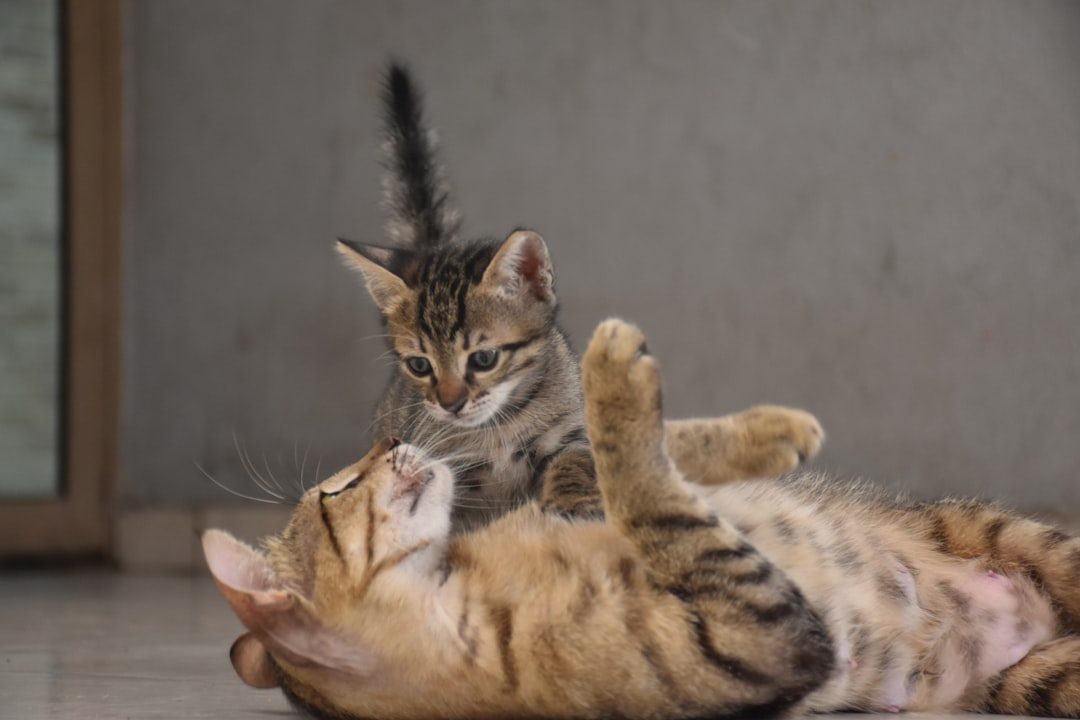
Cats first learn grooming behavior from their mother, who performs this function to help keep kittens clean and create bonds, and by 3-4 weeks of age, kittens have learned to perform this independently, and weaning typically occurs between 6-10 weeks. This early learning shapes their entire grooming routine for life.
Mothers lick their kittens to clean them, provoke urination and suckling, provide comfort, and strengthen their bond, and at 4 weeks of age, kittens begin grooming themselves and shortly thereafter start grooming their mother and littermates. This progression from receiving to giving grooming marks important developmental milestones.
The Anatomical Grooming Advantage
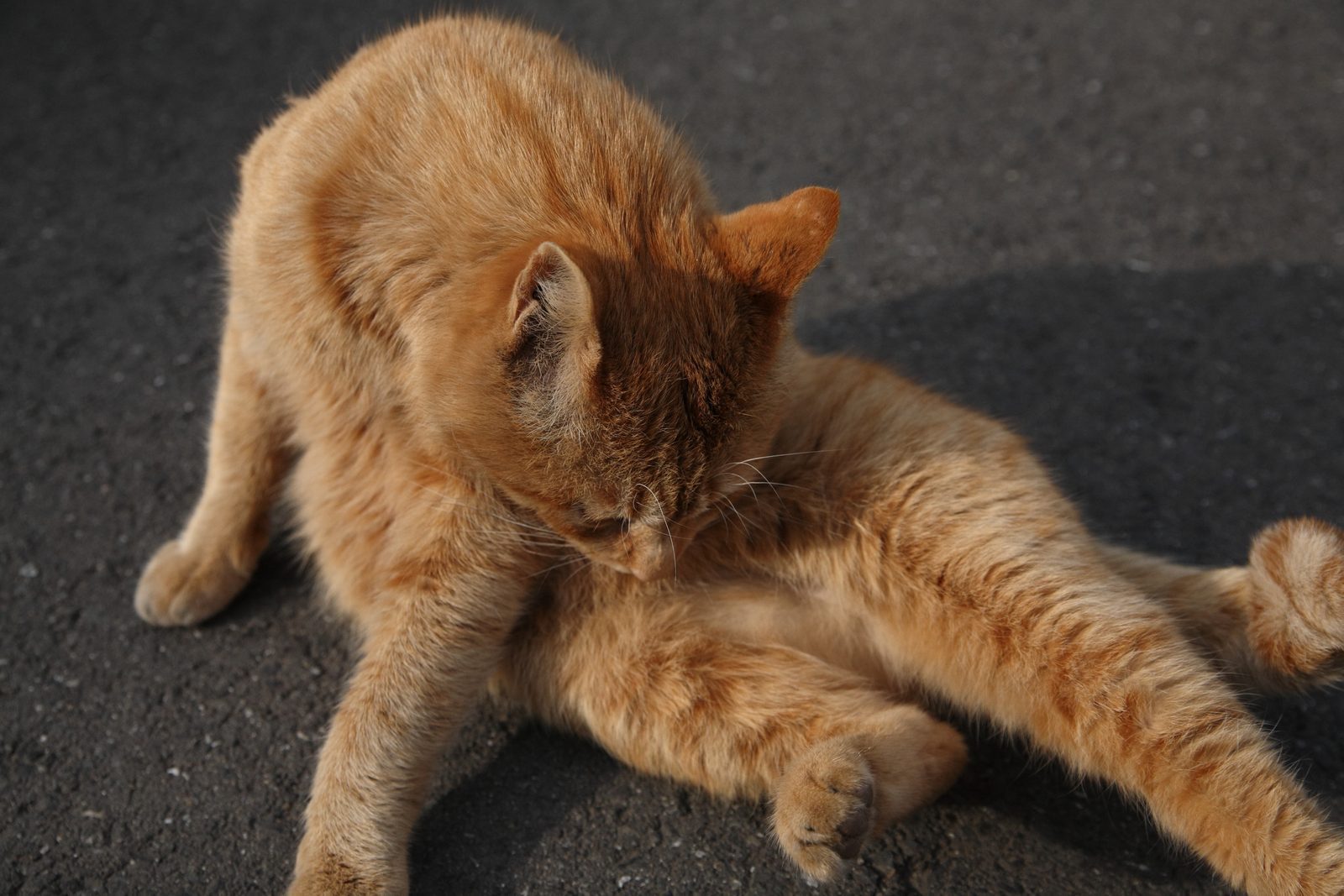
Cats are remarkably flexible, allowing them to reach most areas of their bodies, and their tongues consist of many small barbs or papillae made of keratin that face backwards, which are useful in removing hair and foreign bodies. These physical adaptations make cats incredibly efficient self-groomers.
Cats have rudimentary, free-floating collarbones that aren’t connected to other bones, which makes it possible for them to turn their heads completely and lick between their shoulder blades. This incredible flexibility, combined with their specialized tongue structure, allows them to clean areas that would be impossible for other animals to reach.
The Stress Relief Mechanism
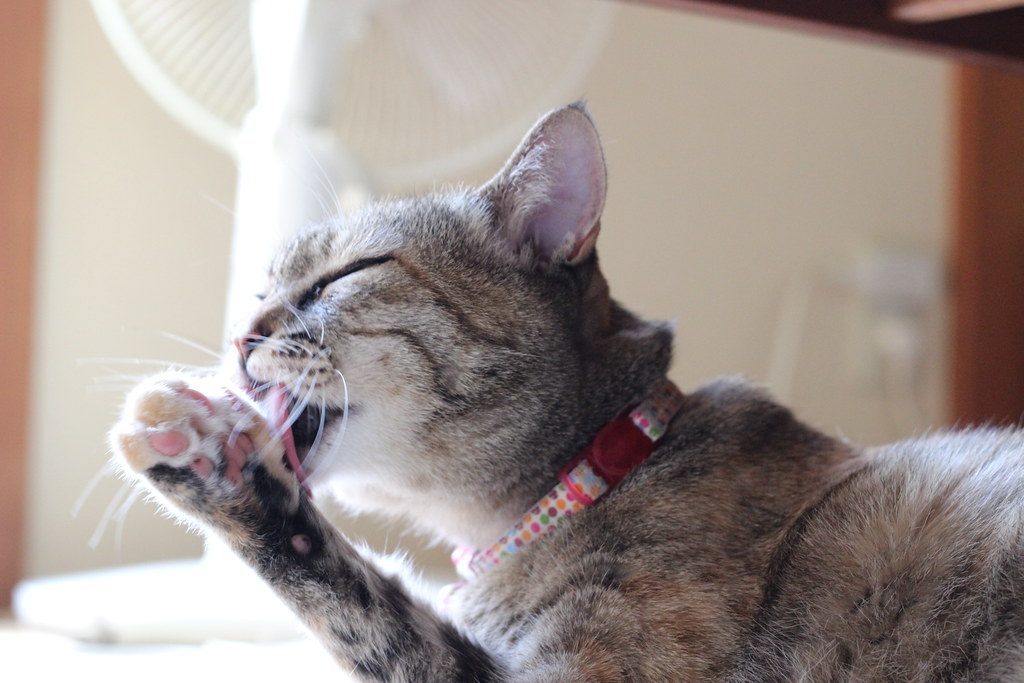
Licking can be used as a displacement behavior by cats if they are feeling stressed, and they will usually direct the licking to themselves, but if you’re close, you may also get licked. Your cat’s grooming sessions often serve as their natural stress-management system.
A cat’s brain releases natural neurotransmitters (endorphins) when they lick themselves, and these endorphins induce feelings of comfort when grooming, so if your kitty is stressed, they may instinctively try to comfort themselves by grooming. This self-soothing mechanism can become problematic if stress levels remain consistently high.
The Territory and Identity Maintenance
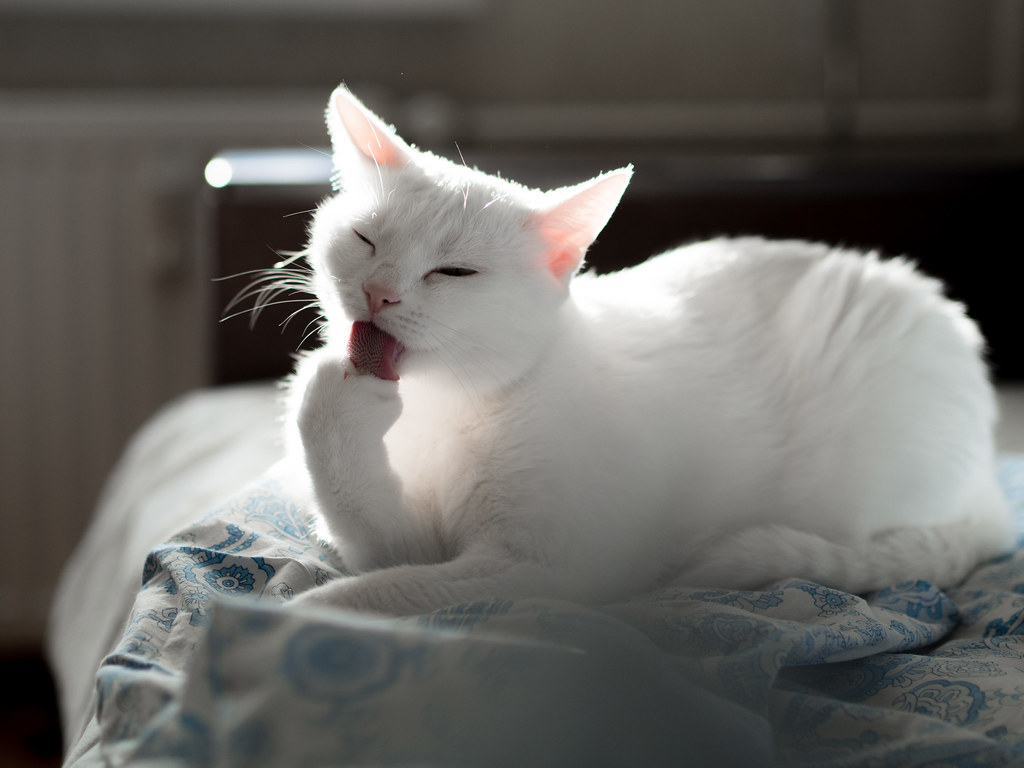
Your cat’s grooming routine involves more than cleanliness – it’s about maintaining their territorial identity and personal scent profile. When cats groom each other, they are sharing scents, which helps to create a unified group smell that is important for cats living together, as it fosters a sense of community and reduces aggression.
Individual grooming serves a similar purpose by maintaining each cat’s unique scent signature. This careful scent management helps your cat navigate their social world, whether they live alone or in a multi-cat household, by ensuring their identity remains clearly defined and recognizable.
The Parasite Defense Strategy
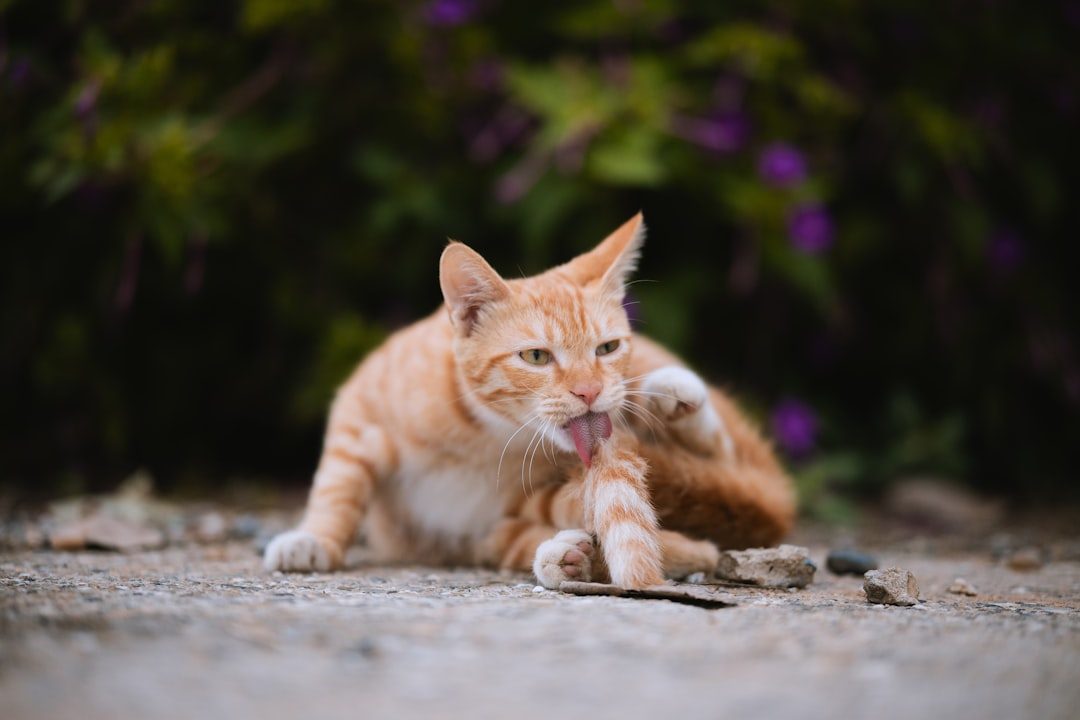
Grooming helps to reduce mats and remove loose hair, dirt and parasites like fleas. Your cat’s daily grooming routine serves as their first line of defense against external threats, mechanically removing potential problems before they can establish themselves.
One of the important functions of grooming is the removal of ectoparasites, and temporary prevention of grooming in cats living in a flea-infested environment can allow adult flea numbers to increase to at least twice the level of cats in which grooming is freely allowed. This demonstrates just how effective your cat’s natural grooming behavior is at pest control.
The Rearrangement Response to Petting
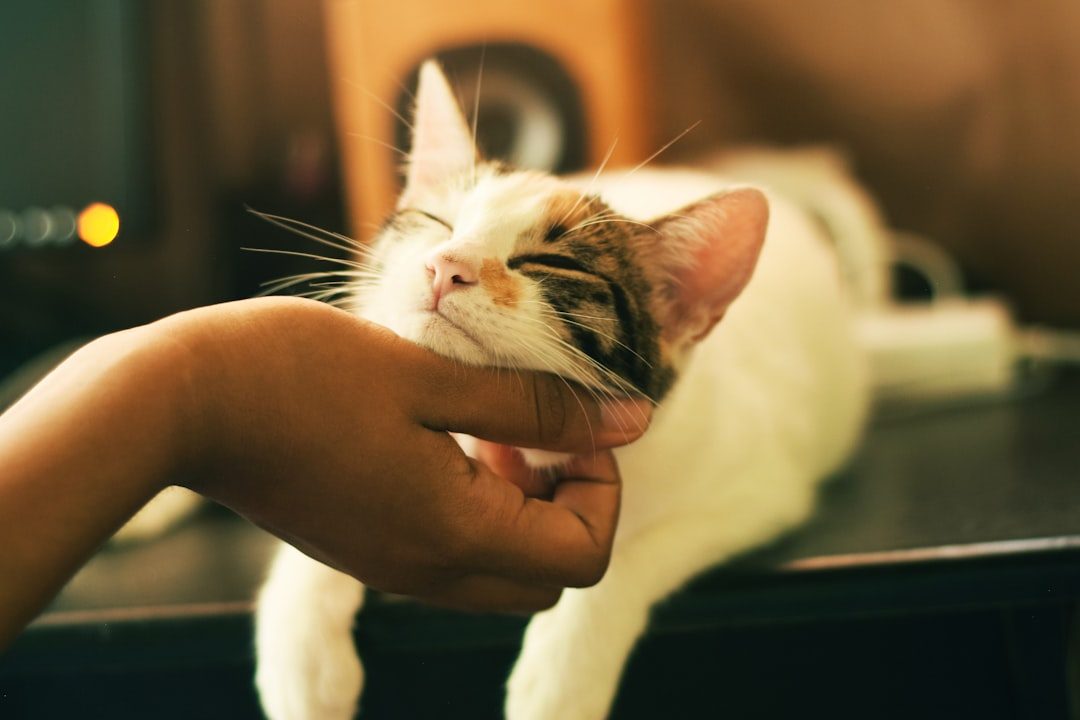
Cats groom themselves right after you’ve petted them, even though you might think they don’t like being petted at all, but they’re actually just rearranging their hair follicles into the right place again. This behavior isn’t rejection – it’s maintenance work.
When you pet your cat, you’re disrupting their carefully arranged fur pattern and scent distribution. The post-petting grooming session is your cat’s way of restoring their coat to its proper configuration while also incorporating your scent into their personal grooming routine, which is actually a sign of acceptance and bonding.
Excessive Licking and Hair Loss Patterns

Overgrooming occurs when a cat grooms themselves more than they need to, and if your cat is licking too much, they can lose fur in strips along their back, belly, or inner legs, with affected areas potentially being completely bare or having very short stubble. These distinctive patterns often provide clues about underlying causes.
The most common areas for overgrooming are the belly, the legs (particularly the insides of the hind legs) and across the flank (side), with patches often being symmetrical on either side of your cat’s body. The location and symmetry of hair loss can help veterinarians determine whether the cause is medical, behavioral, or stress-related.
Skin Irritation and Compulsive Behaviors
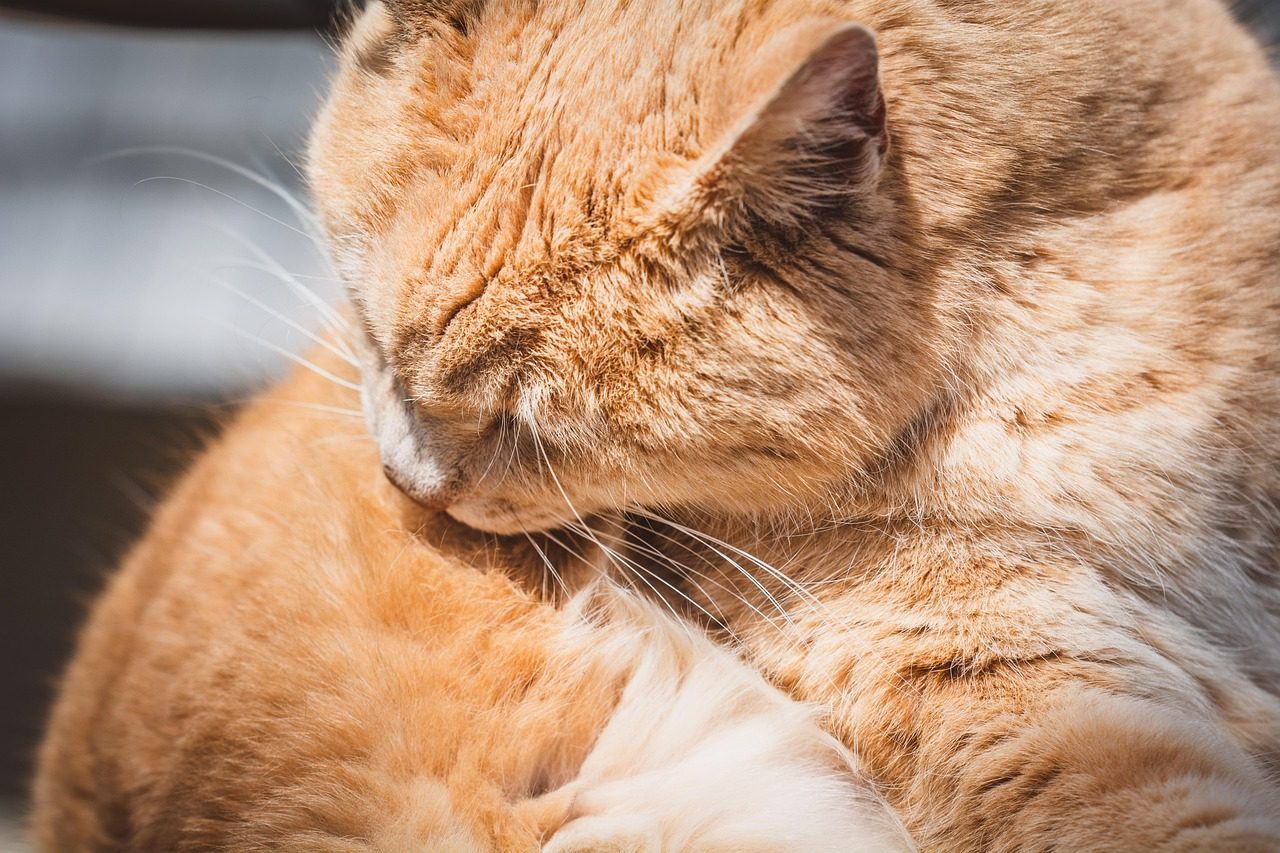
The most common signs of overgrooming are hair loss and irritation of the skin, with the areas usually affected being the abdomen, legs, flank, and chest, as these are the most easily reached areas. What starts as normal grooming can escalate into compulsive behavior that causes physical damage.
Overgrooming may seem obsessive, with actions like licking, chewing, plucking, and biting areas of hair or skin, and it’s often difficult to get the cat to stop, resulting in damaged fur shafts, hair loss, and sometimes even skin sores. This behavior can interfere with your cat’s daily functions like eating, playing, and sleeping.
Medical Causes Behind Excessive Grooming
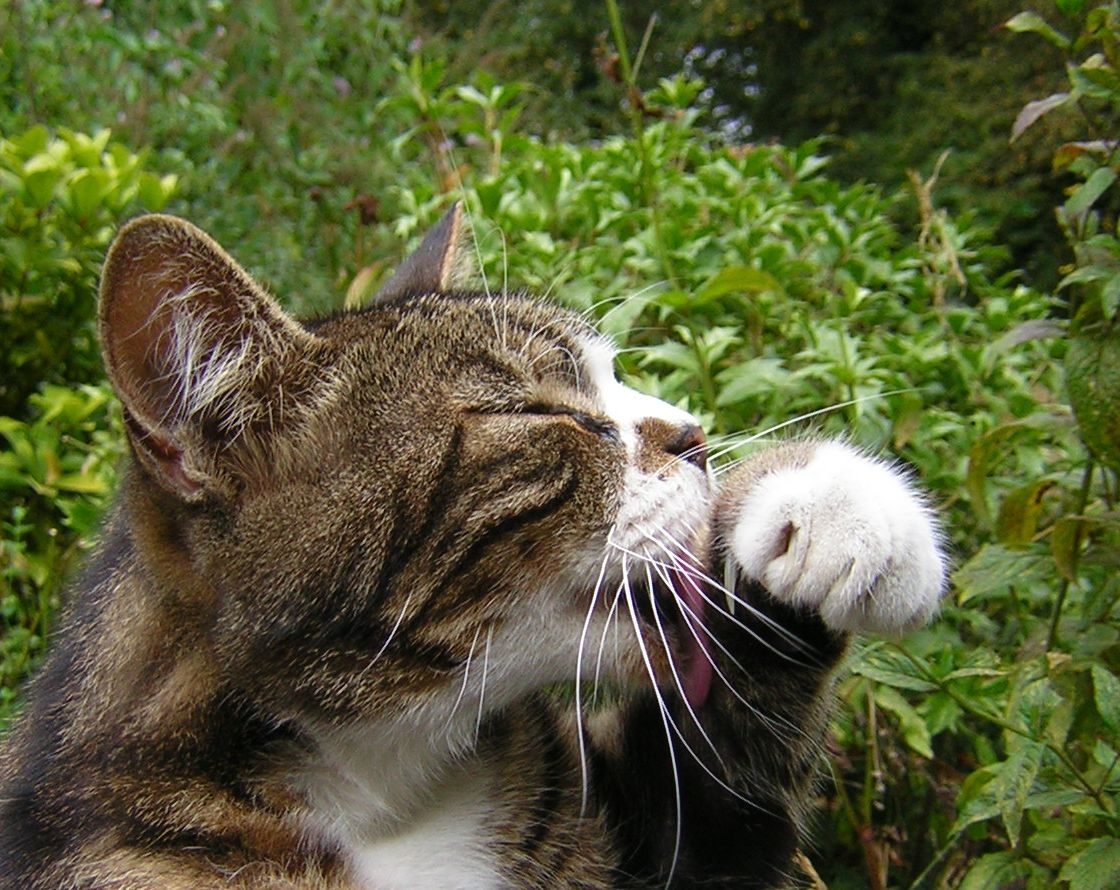
Cats may overgroom because their skin is irritated, which can be caused by an infection, an allergy to certain foods, parasites, or substances in the environment. Medical issues often trigger overgrooming as your cat attempts to relieve discomfort through increased licking and cleaning.
Pain can trigger overgrooming, especially when directed at a specific body part, for example, cats with bladder infections may lick excessively around the genital or belly area due to irritation and pain from the infection. Common sources of pain-related overgrooming include urinary tract disease and arthritis.
Psychological Stress and Anxiety Factors

If veterinarians cannot find an underlying medical cause, cats may be diagnosed with psychogenic alopecia – a compulsive disorder usually brought on by stress or anxiety, and while cats find self-grooming extremely comforting, if confronted with conflict, environmental changes, or perceived threats, they often groom to feel calm.
The types of stress that cause psychogenic alopecia are usually chronic and consistent, and since cats are especially sensitive to change, anything new, moved, or altered in their environment or routine could be the culprit. Stress is the most common cause of overgrooming in cats, with various stressors like permanent changes in routine and environment resulting in psychogenic alopecia.
Hidden Grooming Behaviors and Detection

It is not uncommon for cats to do overgrooming in secret, and many owners don’t realize it is happening until hair loss is significant or other symptoms become apparent. Many cat owners say they don’t think their cat is grooming excessively, but this may be because their cats feel comfortable in the owner’s presence and don’t feel the need to groom obsessively while in their company.
Overgrooming can occur when you are not watching, making it more difficult to detect and address. Because cats groom frequently, owners usually don’t notice a problem until they observe significant hair loss or skin lesions. This means you need to actively look for the physical signs rather than relying on observing the behavior directly.
Treatment and Management Approaches
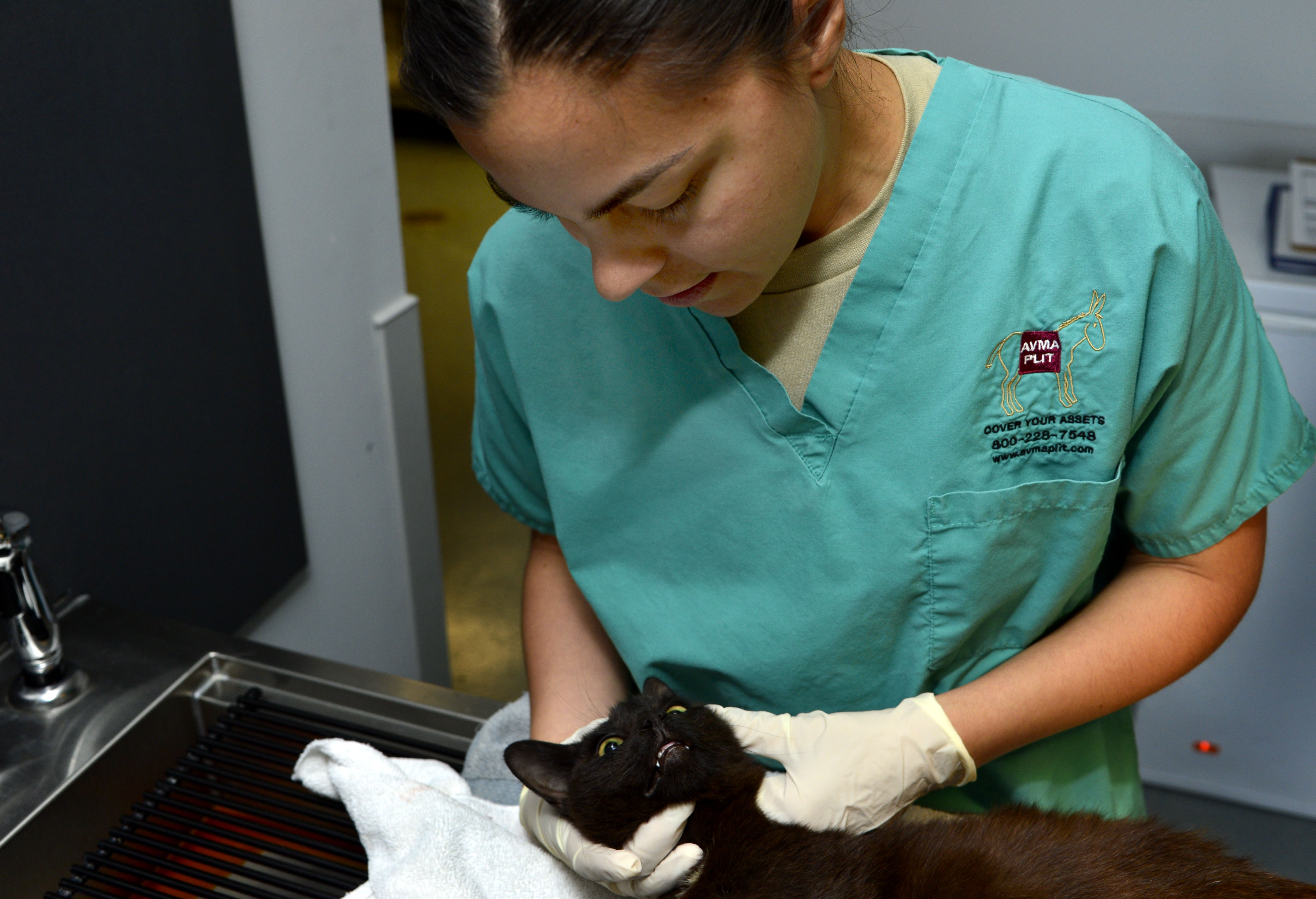
You should contact your veterinary team as soon as possible if you notice your cat overgrooming, and your vet will first investigate to see if there’s an underlying medical problem by taking a detailed history, performing an examination, and possibly conducting further tests. Early intervention is crucial for successful treatment.
If your cat is diagnosed with anxiety-related psychogenic alopecia, it will be important to identify and eliminate environmental or social changes contributing to stress, and the best results usually come from both medical and environmental changes, keeping your cat’s day as routine as possible. A qualified behaviorist can help modify your cat’s behaviors, but you should not punish your cat for this behavior as that will only lead to more stress.
Your cat’s grooming habits offer a fascinating window into their physical health, emotional well-being, and natural instincts. While normal grooming is essential for their health and happiness, recognizing when grooming becomes excessive can help you address problems before they become serious health concerns. By understanding these behaviors, you become better equipped to provide the care and support your feline companion needs throughout their life. What aspects of your cat’s grooming routine have you noticed that might tell you more about their inner world?





